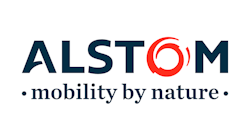In 2008 the transportation industry will face the challenge of meeting constantly increasing ridership demands while mitigating the impact of hyper-inflation on the price of key commodities, which have caused spiraling costs throughout the industry.
According to the American Public Transportation Association (APTA), 34 million Americans ride some form of mass transit every weekday — a 30 percent increase since 1995. Additionally, APTA has found that 78 million more trips were taken during the first six months of 2007 compared to 2006, and 2006 wasn’t bad with 10.1 billion trips representing the highest number in 49 years.
During the last few years, however, the costs affecting our industry, namely those of raw materials such as iron and steel, copper, aluminum and oil-based derivatives, have increased significantly. We can expect these prices to remain high, and even continue to climb, particularly in the United States where the anticipation of inflation and the decline of the U.S. dollar has dramatically impacted prices.
The U.S. dollar per-pound price of stainless steel, for instance, has increased some 80 percent since September 2004. During the same time period copper and aluminum have climbed by more than 170 percent and nearly 40 percent, respectively.
Metals, however, are not the only commodities whose price will remain high in 2008. In November 2007 the price of crude oil got perilously close to the $100-a-barrel mark, representing a nearly 125 percent increase in price from September 2004. We can expect more of the same in 2008, and Americans will take notice as the price at the pump continues to rise. This, coupled with an increasing awareness of environmental issues, will drive ridership to new records in the United States, but will also have a detrimental effect on the cost of all other commodities.
In order to meet growing ridership demands transit agencies will need to find ways to accelerate the planning and execution of projects, including vehicle procurements and infrastructure improvements, while simultaneously increasing the importance placed on efficiency, passenger safety, comfort and security. Whether it is the steel or aluminum used in a new rail car, or the wiring used in signaling, entertainment or security systems, the high price of materials is sure to impact these initiatives, but should not slow down their implementation, which is so critical to the growth of our economy.
New ways of bringing standard solutions to the markets and to lesson the impact of inflation will motivate transit agencies to turn to suppliers who have the experience, know-how and capability to manage such new trends. The costly experimental phase may need to be shortened, alternate funding schemes need to be developed, and totally integrated solutions will ensure fast and efficient implementation.
Summary
By combining its vast global experience and strong regional presence, Alstom is ready to develop such unique “turnkey” solutions for customers in North America to meet the needs of 2008 and beyond. This includes drawing on its experience as one of North America’s — as well as the world’s — largest providers of integrated rail systems, including state-of-the-art rolling stock, rail infrastructure, modern and innovative signaling, communications and entertainment systems, and system security solutions, all maintained by highly qualified specialists. As we look toward tomorrow together, Alstom is shaping the transportation future all over the world.
Biography
Roelof van Ark, Senior Vice President, North America, joined Alstom Transport in June 2005. During his nearly 30-year career in the transport industry, Roelof has held top executive positions in Europe and North America, including President, Aviation Security, Invision Technologies (2003) and President & CEO, Siemens Transportation Systems Inc. (1999).




